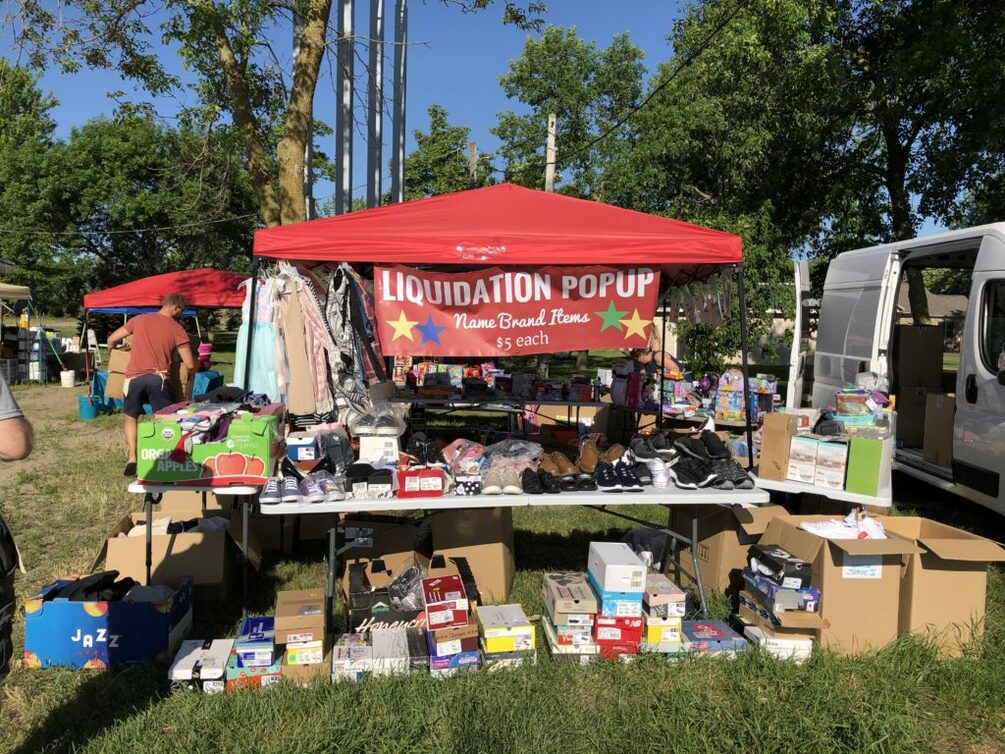
I’ve been making money with Amazon for almost 25 years (half of my life)! In 1998, I joined their Associate program (this was the first affiliate program on the internet), and in 2017, I actually wrote an eBook, How To Make Money With Amazon Native Ads, earning money through Kindle Direct Publishing. It was also in 2017, when I started dabbling in Amazon FBA.
Contents
What is Amazon FBA?
FBA stands for Fulfillment by Amazon. It’s a program that allows you to sell your products on Amazon and have them fulfilled by Amazon. This means that when a customer orders one of your products, Amazon will pick, pack, and ship it for you. They will also handle customer service and returns for you.
Sellers who use Amazon FBA can get their products to customers faster and with Prime shipping benefits, which can lead to more sales. Amazon FBA can also help sellers scale their businesses, since they don’t have to worry about fulfillment and customer service themselves.
Overall, Amazon FBA is a great way to make selling on Amazon easier and more successful.
How To Get Started With Amazon FBA
To get started with Amazon FBA, you first need to create an Amazon seller account. You can sign up for a Professional seller account or an Individual seller account.
If you plan on selling more than 40 items per month, you’ll want to sign up for a Professional account, which costs $39.99 per month. If you plan on selling fewer than 40 items per month, you can sign up for an Individual account, which costs $0.99 per item sold. You can definitely start with an Individual account and switch to a Professional account later on as this is what I did.
There are various measures that Amazon takes to prevent fraudulent seller sign-ups, so you will need to provide your full legal name and mailing address and provide a copy of your driver’s license even if you sign up as a business.
You will also need to pick out a display name that potential buyers will see next to the items that you are selling. I went with the display name of “shoppingbookmarks” since that’s my seller handle on Ebay.
Amazon will also ask for a credit card number to charge the monthly fees to if you don’t make enough sales to cover this cost. You will also need to provide your bank routing and account numbers so any earnings can be directly deposited into your bank account. And lastly, you will need to verify everything via a quick phone call or text message verification step.
Once you find products to sell on Amazon (which we will cover more in depth below), you’ll be able to add those products to the Amazon Seller Central using their website, their app or a third-party tools (we will discuss these options later as well). Adding products is easy if the item is already in Amazon’s database of products.
If your product is not cataloged, you will need to add as a new product which will ask you more about the product, including category, product ID (UPC, EAN, ISBN, or ASIN), product name, brand name, dimensions of the item, your price, description, images, target audience and more depending on which category you’ve chosen.
Some brands do not allow third parties to add products under their brand, while other brands do not allow resellers at all. Here is a list of those brands to avoid. Other brands require that you go through an ungating process to prove that you are buying your inventory through a reputable source. Here is a list of online stores that provide invoices for ungating.
Source Profitable Inventory
My college microeconomics class taught us that savvy businesses buy low and sell high. So how do you go about finding, also know as “sourcing” low priced inventory to resell at higher prices? There are a few different ways to source inventory for your Amazon FBA business. You can source products from online retailers, manufacturers, wholesalers, or even create your own products.
Retail Arbitrage
Retail arbitrage (RA) is when you buy products from a retail store and sell them for a higher price online. The benefits of retail arbitrage are that it is relatively easy to do and you can find a lot of inventory. The drawbacks are that it can be time-consuming to find profitable items and you have to compete with other sellers who are selling the same items.
Personally, I started with retail arbitrage by shopping the clearance aisles at Walmart and scouring Menards stores for free after rebate items, which they have now discontinued. I last time I was at Costco, I saw two different people there scanning UPCs on products with the Amazon seller app looking for profitable items to resell.
By downloading the Amazon Seller app, you can quickly find out how much profit potential there is in a product by scanning its UPC barcode. The app shows you if the item is available for sale on Amazon as well as the current low price of the product. It will then show you what Amazon fees are, estimated shipping to Amazon costs (I set mine to 50¢ per pound). You can then input your cost, and it will tell you what your profit would be.
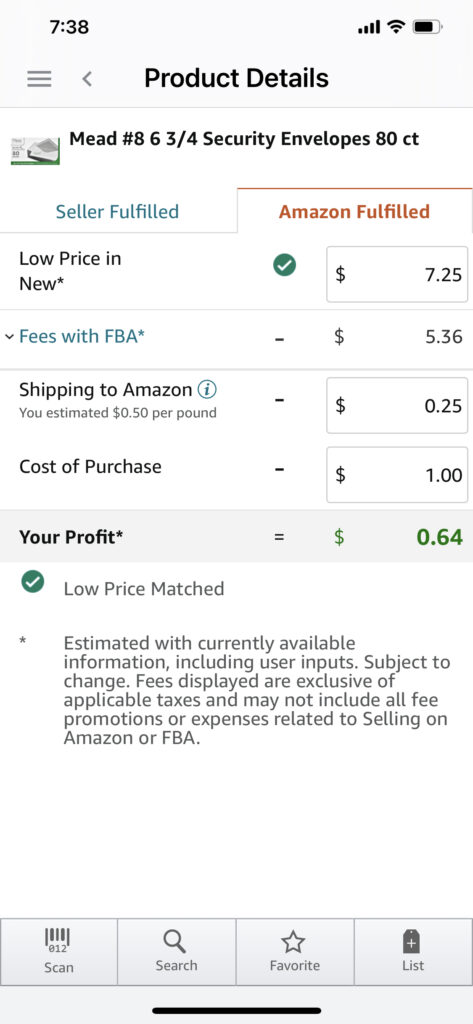
Above is a screenshot that I took after scanning a box of Mead #8 6 3/4 Security Envelopes with the Amazon seller app. So, even the item is selling for $7.25, and I can buy it for only $1.00, after fees and shipping, I would only make 64¢. While that is a 56% return on investment, I probably wouldn’t risk it as the price could tank. In fact, since I’ve taken that screenshot (an hour ago), the price has reduced to $6.50 on Amazon, so I would only make 15¢ now.
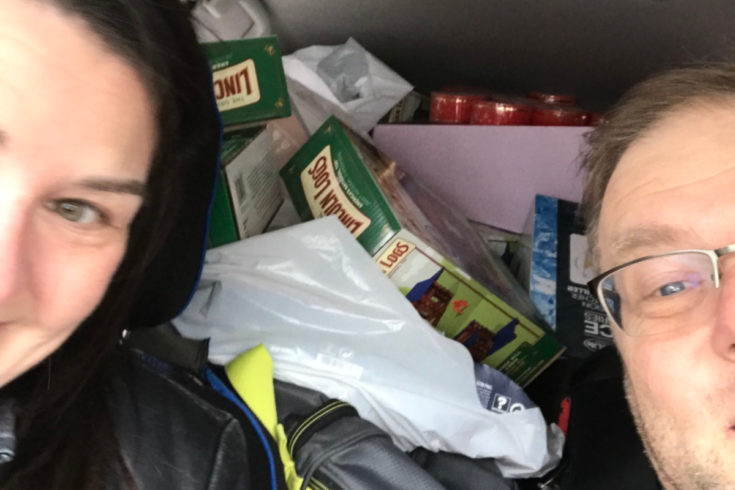
My then boyfriend (now husband) and I used to go on road trips on the weekends, visiting new places, taking in the scenery and hitting up stores on the way for retail arbitrage items to resell.
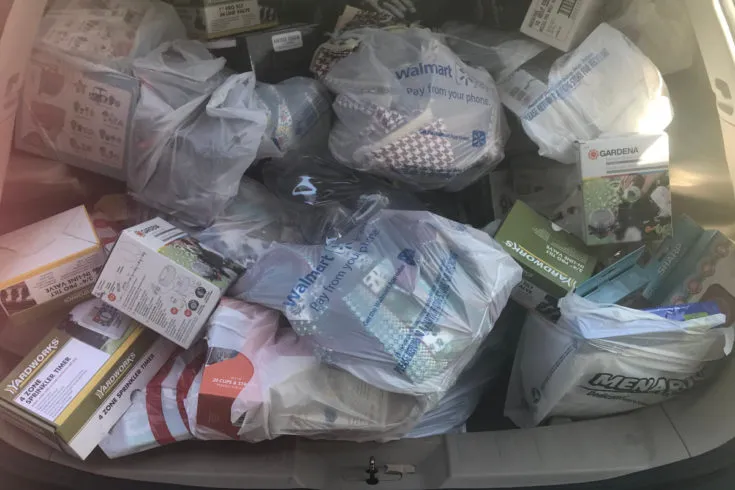
Many times, we’d pack up orders in a hotel room when my Ford Escape was full and drop the boxes off at a UPS drop-off point, so we could buy more items! We ended up buying a Promaster City van so we could buy more items one trip, and then ended up upgrading to a Dodge Promaster 2500 commercial van that we still use today.
You may also want to apply for a resale certificate so you don’t have to pay sales tax on the items that intend to resell. Not all businesses will allow you to use, but several do, including Costco, Menards, and Walmart.
Online Arbitrage
Online arbitrage (OA) is when you buy products from online retailers and sell them for a higher price. Many people view online arbitrage as a viable option because it is not difficult to do, and there is usually an abundance of inventory. The negative aspects are that making a profit can take up considerable time, and other sellers may be selling the same products.
So while we did retail arbitrage on the weekends, I did online arbitrage during the week searching for profitable products online.
Online Arbitrage Tools
There are various tools out there that make this easier since you can’t just scan the UPC barcode on the online products like you do at brick and mortar stores.
- AMZ Scout – This is a Amazon product research and analysis tool that enables users to find profitable products to sell on Amazon. The tool provides data-driven insights and recommendations based on a variety of factors, including Amazon search volume, product sales price, competition level, and more. AMZ Scout also offers users the ability to track product prices, sales rank, and reviews over time, as well as access to a number of other Amazon seller tools and resources. Get a FREE trial through our link!
- RevSeller – This Chrome extension shows the sales rank, category and profitability at top of every Amazon product page.
- Tactical Arbitrage – This tool helps online sellers find profitable inventory. The website provides a database of over 100 million products, and users can search for items by keyword, category, or price. The website also offers a variety of features to help users find the most profitable items, such as an profit calculator and product recommendations.
Online Arbitrage Deal Lists
Online arbitrage deal lists are simply lists of products that you can buy at a low price and sell for a higher price on Amazon. These lists are created by people who have already done the work of finding profitable items to sell. They usually limit the amount people that can join the list so that there isn’t a lot of other people buying and selling the same items. I recommend if you join a list, to not buy the exact products listed, but to use it as a guide to find similar product variations to buy and sell. Shopping Bookmarks offers free online arbitrage deals, and Online Arbitrage Deals offers US and UK version lists for a monthly fee.
Liquidation
Liquidation merchandising is the act of buying closeout, last-season, overstock or even returned merchandise at a fraction of the original cost. These items may also be available if a store changes ownership, goes out of business, or just needs to clear space for new merchandise. The benefits of liquidation merchandising are that you can buy inventory for pennies on the dollar. The drawbacks are that sometimes the inventory is damaged or defective or expired.
I had been considering venturing to buying liquidation pallets for awhile, but I was scared to the take the plunge as it can be costly especially when you have to pay extra for residential delivery and lift-gate usage.
I actually ordered my first Target liquidation pallet in early 2020 right before the pandemic shut down the world. With retail arbitrage at a stand still and online arbitrage having problems with supply and shipping issues, liquidation was a great investment at the time. Although Amazon would only let resellers send in “essential” items, all health and beauty aids were considered essentials. And with beauty salons closed, sales for hair color skyrocketed!
If you’re looking to buy your own liquidation pallets, including Amazon return pallets, enter your email address below for a free liquidation guide with our compliments.
Wholesale
Wholesale items are items that you buy in bulk from a wholesaler or direct from the manufacturer and sell individually. The benefits of wholesale are that you can buy in bulk and get a discount. The drawbacks are that you have to find the wholesalers and manufacturers first, and you usually have to buy a large quantity of each item.
I personally haven’t sold any wholesale items on Amazon, although I’m not opposed it.
Private Label
Private label items are items that you brand with your own label and sell. The benefits of private label are that you can brand the products with your own label and build a brand. The drawbacks are that it is more expensive to get started and it takes more time to get the products made and branded correctly. It is also difficult to market a private label item if no one has heard of your brand or item before, so advertising is a must.
I have only sold a couple of private label items that I bought from Alibaba.com, but it took many months to receive my items from China that I then needed to brand as my own, set up a new listing and promote that listing.
Here’s a lesson I learned the hard way: Do not buy something from Alibaba that you already see listed on Amazon by someone else and send it in hoping you can piggy back off that listing. Instead of sending a “cease and desist”, that brand owner may harass you and repeatedly buy your items, have them pending, cancel the order, and then immediately rebuy. It’s a vicious cycle, and the only way to make it stop is to delete the listing and have your items go stranded. You can then opt to have them returned to you.
I haven’t given private label another chance as RA, OA and liquidation are doing well for me. But I know that private labeling can be very lucrative for some.
Amazing.com is giving away a free copy of the book “Million Dollar Brand” that reveals how to build a million dollar brand on Amazon. Click here to get yours.
Amazon FBA Seller Expenses
The monthly fee for an Amazon Seller account is only $39.99, but that’s not even the tip of the iceberg when it comes to the costs of running an Amazon FBA business. I’ll give you a break down of everything I spent money on below. Just remember: you have to spend money to make money.
FBA Education Expense
If you’re willing to do the extra legwork, there are plenty of free resources available online. However, some Amazon FBA courses will save you time in the long run by teaching topics you would have never thought to cover yourself.
| Amazon FBA Course Name | Website | Cost |
|---|---|---|
| Full-Time FBA JumpStart Amazon Course | fulltimefba.com | $347 |
| Master Bundle Freedom Builder Bootcamp Course | junglescout.com | $999 through our link ($5589 value) |
| The Ultimate Online Course For Selling Products on Amazon | thelastamazoncourse.com | $1/week or $39/lifetime ($2997 value) |
| Udemy Amazon FBA Courses | udemy.com | Courses as low as $14.99 |
Inventory Expense
You will need to invest some money to buy inventory to start an Amazon FBA business. I funded my business myself, through bootstrapping, but some people use credit cards or personal loans. If you go that route, make sure to get a low interest rate and factor that into the cost of your inventory.
Shipping Expense
When you’re buying boxes, packing tape, labels and other materials needed for shipping, the cost can start to stack up. Plus the expense of actually shipping the boxes to Amazon warehouses can get pricey. Amazon has a partnership with UPS which significantly lowers the price of shipping compared to if you’d ship the items yourself. But Amazon dictates to which warehouses you will to send certain items to, and sending boxes across the country can get even pricier.
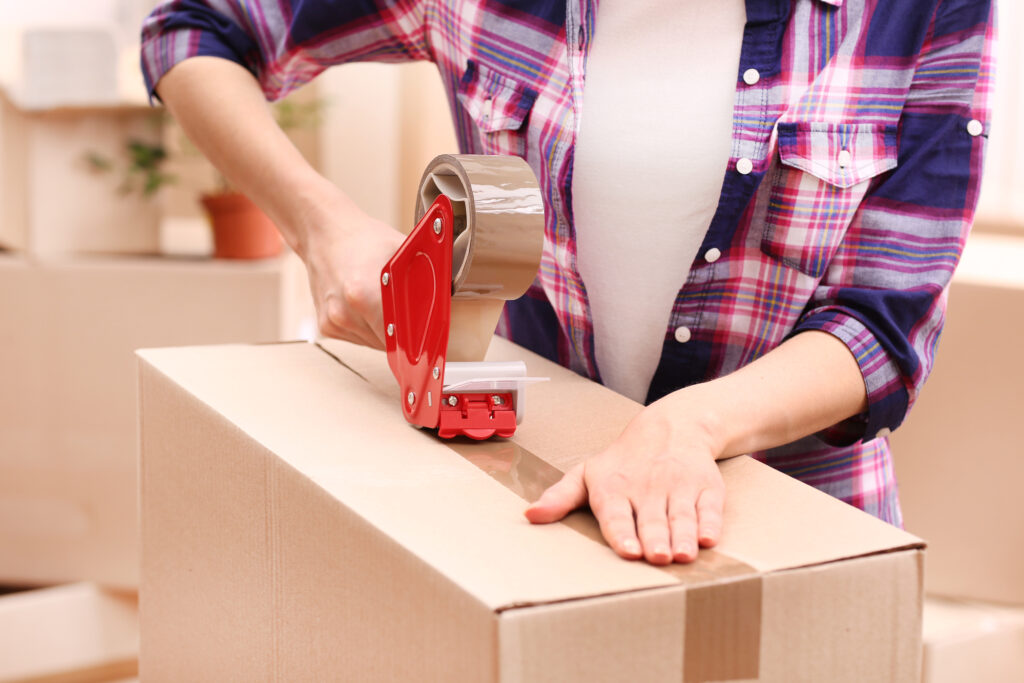
One way to cut costs is by asking friends and family to hang onto their cardboard boxes and packing supplies. But if your business continues to grow, you’ll need more than that. The best prices I’ve found on boxes is from Lowe’s, plus they offer free shipping and delivery.
Before shipping, you may need to invest some time into “prepping” your items so they look pristine and pass Amazon’s requirements. Here are some items I personally use for prepping and shipping my Amazon FBA shipments:
- Dymo Labelwriter Printer – I use this to print product labels with these labels (for labels to be compatible with Dymo printers, they must have the little tab punch between labels).
- Rollo Printer – I use this printer to print shipping labels. I order free 4×6 labels from UPS.
- Polybags – Make sure the bags you use have suffocation labels; if not, you can buy the labels, too.
- Scotty Peelers – These help remove clearance price stickers easily.
- 3″ Tape Dispenser – You will never want to use 2″ tape again after using this!
- Box Resizer Tool – If you’re shipping box is too big, this will easily resize it so you don’t need to use as much packing material, and shipping costs should then be less for being a small size.
- Various Stickers (it’s cheaper to buy pre-made stickers than print them yourself)
- Clear Round Stickers – I use these for product boxes that don’t stay shut (looks more professional than tape)
- Thank You Labels – If you can’t get all of the price tags off or rip the packaging while doing so, cover up the blemish with these labels.
- Sell as a Set Stickers – If you are bundling items to sell as one listing, you need to include a “Sell as a Set” sticker on the outside of the package.
- Ready to Ship Stickers – These are usually for larger items that you send in individually. This lets the Amazon warehouse know to not open and discard that outside packaging, but to send it to the customer as is.
- Hazmat Stickers – When sending in hazmat items to Amazon, you need to include these stickers on the top of the box plus please one on all four sides.
Storage Expenses
After a couple of years, Amazon business eventually took over my basement, my garage, my spare bedrooms, my living room, and my dining room! I started renting out storage units and had 5 at one time, with four of them being oversized commercial units. Rent every month for those storage units were not cheap! Last year, I bought some land and built a 104′ x 60′ pole shed. This year, I built another shed the exact same size, and they are connected with a breezeway so that our forklift can travel between them.
Tool Expenses
In addition to RevSeller which I mentioned earlier and highly recommend, I also pay for several other tools that offer subscription memberships. By paying for these services yearly, I am able to receive a discount off of the monthly rates. The following are all of the ongoing monthly services that I currently pay for:
- AZLabels – This is a Chrome extension that easily formats my item labels and shipping labels to print correctly.
- Bqool – This is a tool that helps online sellers automate their business. The website provides users with a variety of features, such as automated repricing that integrates with Inventory Lab (listed below) and reprices your products to be competitive and maximize profits.
- Inventory Lab – I use this website (and their app “Scoutify”) mainly to keep track of all expenses associated with each item, which takes into account all fees and shipping costs. The app is also better than the Amazon seller app in that it makes it easy to add new items in bulk and creates orders.
Travel Expenses
When out and about sourcing inventory, you can deduct travel expenses, such as travel meals, hotel costs, and mileage. According to the IRS, the current mileage deduction rate is 65.5¢ for fuel costs plus wear and tear on your vehicle.
Amazon FBA FAQs
Here are some frequently asked questions about Amazon FBA.
Q: What is Amazon FBA?
A: Amazon FBA is a fulfillment program that allows sellers to store their products in Amazon’s warehouses, and the company will handle the shipping to customers.
Q: How much does it cost to get started with Amazon FBA?
A: The monthly fee for an Amazon Seller account is only $39.99, but that’s not even the tip of the iceberg when it comes to costs. Above, I gave a break down of everything I spend money on below. Just remember: you have to spend money to make money.
Q: What are some of the advantages of Amazon FBA?
A: Overall, Amazon FBA is a great way to get started in e-commerce with little up-front investment. In addition, Amazon takes care of all the shipping and customer service for you, which can save you a lot of time and hassle.
Q: Are there any disadvantages of Amazon FBA?
A: One potential downside of Amazon FBA is that you will have less control over your product and your brand. Additionally, the costs of using the program can start to add up, so it’s important to do your research before committing to anything.
Q: How much money can I make with Amazon FBA?
A: There is no limit to how much money you can make with Amazon FBA. It really depends on how much time and effort you’re willing to put into it, and of course, a little bit of luck.
Q: Do I need to be an expert in e-commerce to succeed with Amazon FBA?
A: No, you don’t need to be an expert in e-commerce to succeed with Amazon FBA. However, it does help to have some knowledge of the basics before getting started. There are plenty of resources available online, such as courses and tutorials, to help you get up to speed.
Q: Can Amazon FBA make you rich?
A: The short answer is yes, Amazon FBA can definitely make you rich. However, it’s important to keep in mind that there is no easy road to riches. It will take a lot of hard work, dedication, and luck to achieve success with Amazon FBA. But if you’re willing to put in the effort, it can definitely pay off.
Q: Is selling on Amazon FBA worth it?
A: Yes, selling on Amazon FBA is definitely worth it. The program has a lot of great benefits, such as low up-front costs, convenience, and the ability to reach a large audience. However, it’s important to remember that there are also some downsides to the program, such as the potential for high costs and the loss of control over your product and brand. Overall, though, selling on Amazon FBA is a great way to get started in e-commerce.
Q: What are the pros and cons of Amazon FBA?
A: The pros of Amazon FBA include low up-front costs, convenience, and the ability to reach a large audience. The cons of Amazon FBA include the potential for high costs and the loss of control over your product and brand. Ultimately, whether or not Amazon FBA is right for you will depend on your individual needs and goals.
Q: Are Amazon FBA courses worth it?
A: Whether or not Amazon FBA courses are worth it will depend on your individual situation. If you’re just starting out and need some guidance, then a course could definitely be worth it. However, if you’re already familiar with the basics of Amazon FBA, then you might not need a course. Ultimately, it’s up to you to decide whether or not an Amazon FBA course is worth the cost.
Q: How much do Amazon FBA sellers make?
A: There is no one-size-fits-all answer to this question. Some Amazon FBA sellers make a lot of money, while others make only a moderate income. It really depends on factors such as the time and effort you’re willing to put into it, the products you sell, and of course, a little bit of luck.
Q: Can you make a living off Amazon FBA?
A: Yes, it is possible to make a living off Amazon FBA. However, it’s important to keep in mind that this is not a get-rich-quick scheme. It will take a lot of hard work, dedication, and luck to achieve success with Amazon FBA. But if you’re willing to put in the effort, it can definitely be a great way to make a living.
Q: How much does an Amazon FBA course cost?
A: Amazon FBA courses can vary in price, but most of them are relatively affordable. Some courses may cost as little as $20, while others may cost several hundred dollars. Ultimately, the price of an Amazon FBA course will depend on the quality and length of the course.
Final Thoughts
Amazon FBA is a great way to get started in e-commerce with little up-front investment. In addition, Amazon takes care of all the shipping and customer service for you. This can save you a lot of time and hassle. However, one potential downside of Amazon FBA is that you will have less control over your product and your brand. Additionally, the costs of using the program can start to add up, so it’s important to do your research before committing to anything. Overall, though, Amazon FBA is a great option for those looking to get started in e-commerce.
So there you have it! Everything you need to know about getting started with Amazon FBA. Remember, the key to success is to take your time, do your research, and invest in quality resources. With that being said, good luck and happy selling!
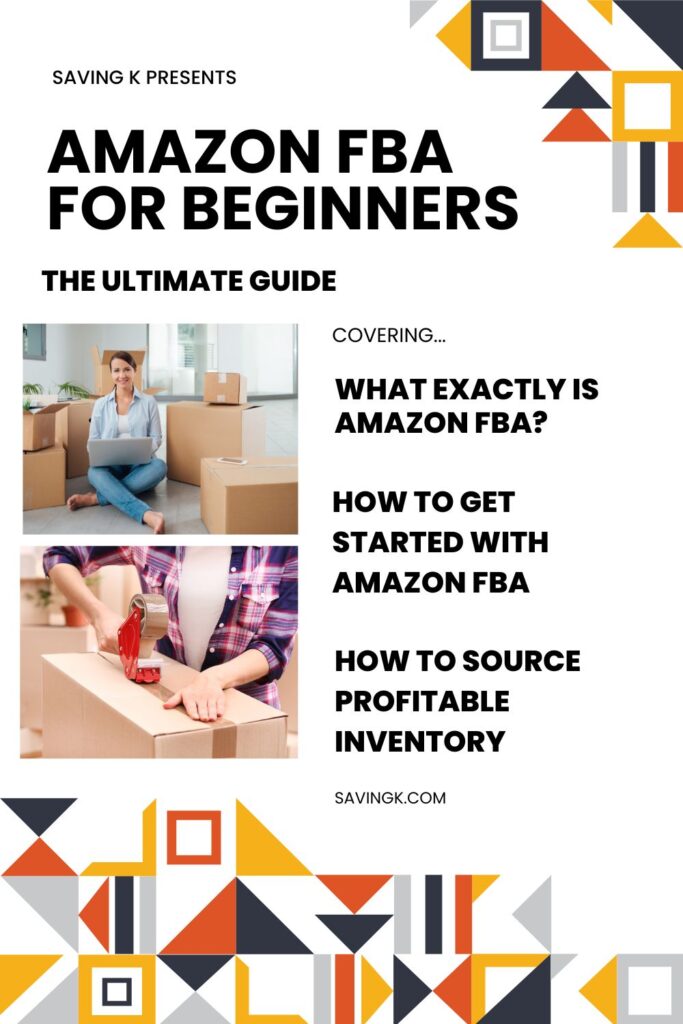
- Featured Speaker at the Stonecraft Christian Women’s Connection - April 20, 2024
- Tips For Penny Shopping Including What Stores Offer Penny Items - April 17, 2024
- How To Become A Side Hustle Queen - April 11, 2024



